Gravel bike vs road bike: what are the key differences?
Both have drop bars but is that where the similarities begin and end?
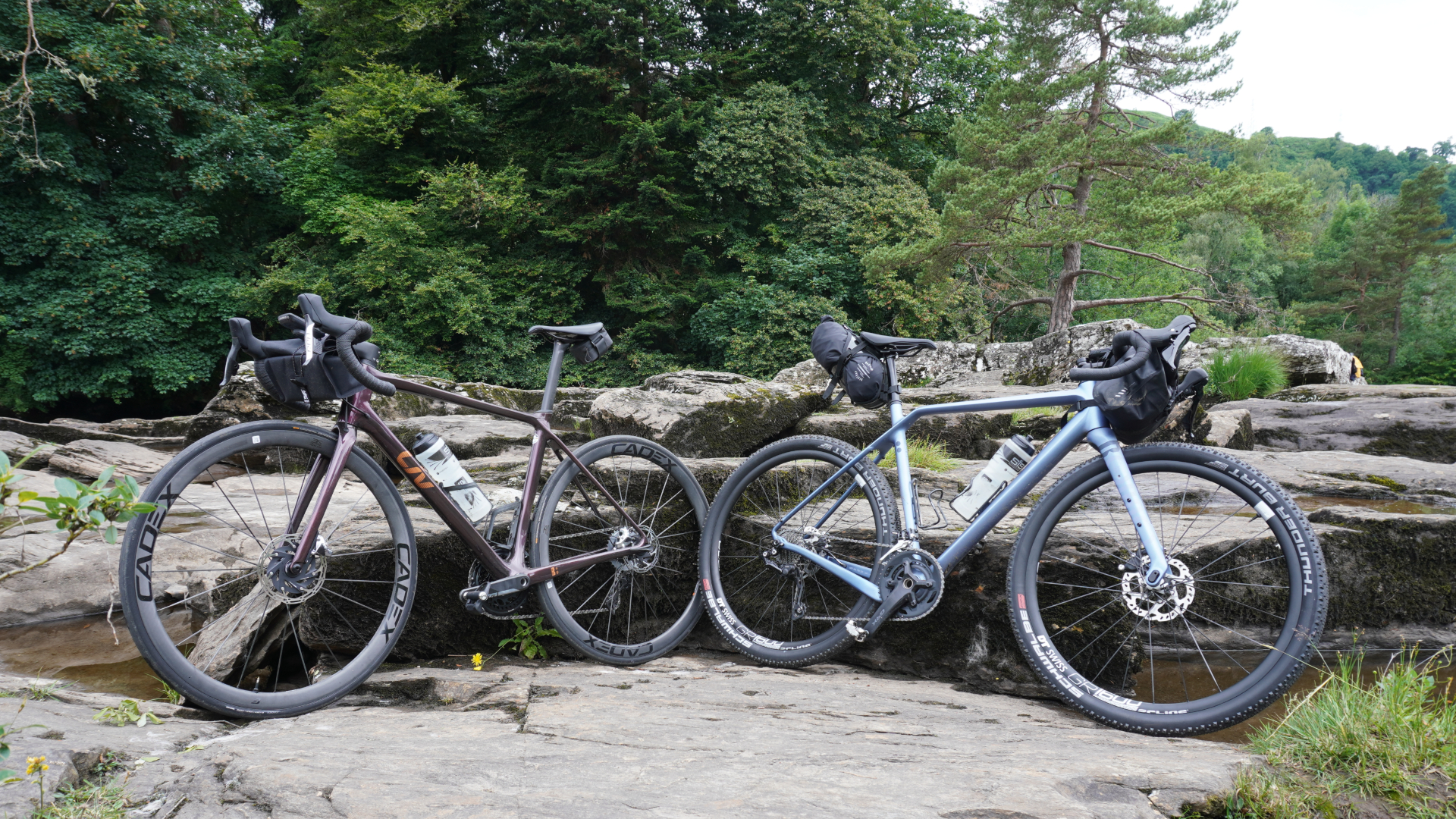
Depending on the models in question, the differences between a gravel bike and a road bike can be like comparing apples to oranges. However it can also be akin to a Braeburn versus a Granny Smith, or a navel matched against a Valencia. In other words, the differences can be clear for all to see, or they can be far more nuanced.
And that’s where we’ll start...
The evolution of the road bikes
It wasn’t so long ago that most of the best road bikes closely resembled each other. While the frame material might differ, the look of the bikes was pretty uniform: round tubing, rim brakes, quick-release dropouts and narrow tyres.
But just as these bikes had come on leaps and bounds from their predecessors, dropping weight and adopting new technology such as integrated shifters, they too were ready for change. Aerodynamic tubing was adapted from time trial bikes, resulting in race-ready machines designed to cut through the wind. Disc brakes came over from the mountain bike world, allowing for wider tyre clearances than ever before. Carbon layups got lighter and gear ranges expanded, often activated with the press of a button, rather than the push of a lever.
The results, over time and through continuing adaptation, meant a new wave of road bikes, each with a distinct tilt. The aero race bike. The lightweight climbing bike. The all-road endurance bike. Each tuned for a specific purpose or with a style of rider and riding in mind.
The evolution of gravel bikes
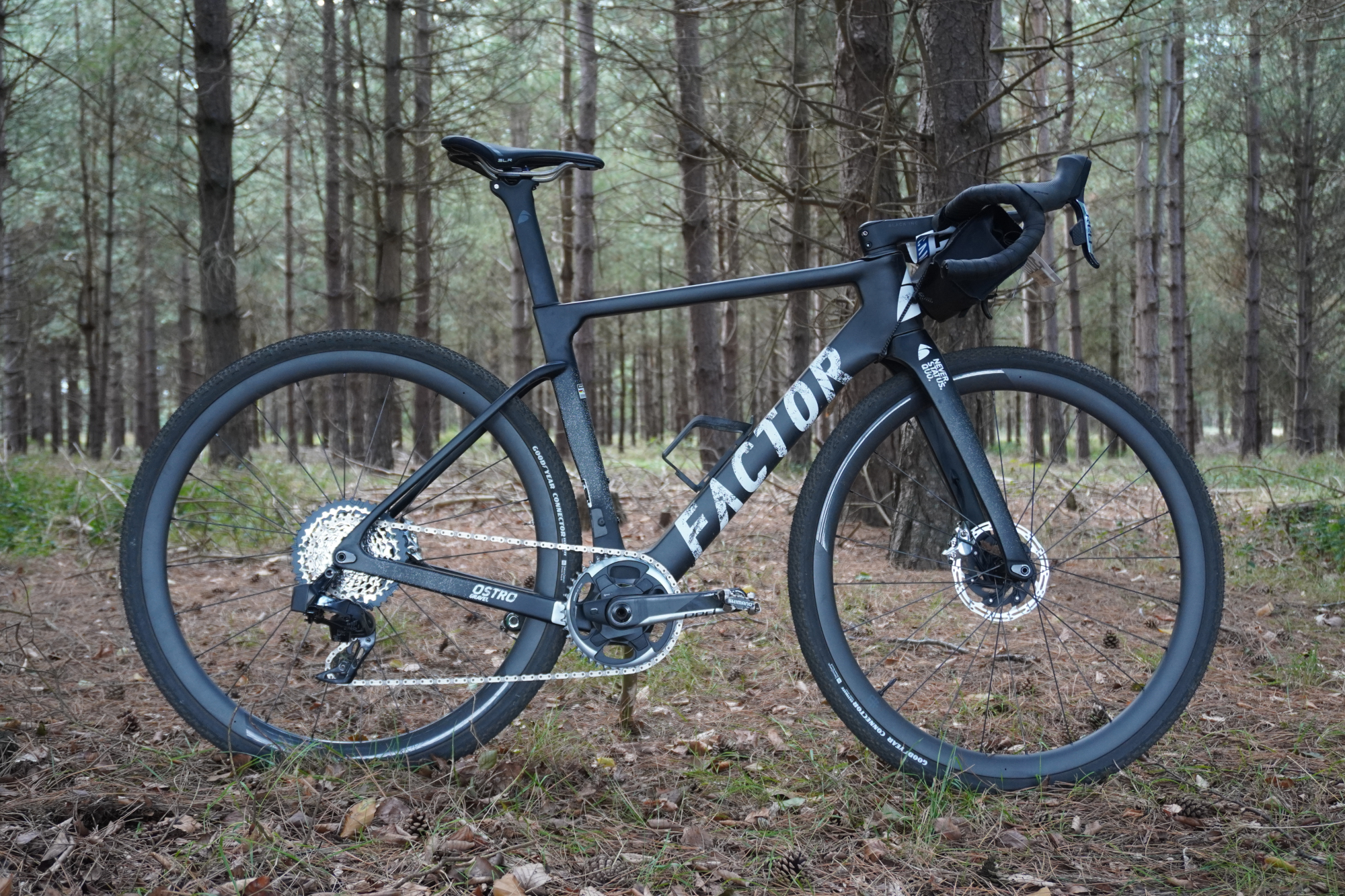
While the gravel bike, at least in its most recent guise, is far newer than the traditional road bike, it too has seen plenty of development in a relatively short space of time. Again, this has led to greater specialisation under the ‘gravel’ banner.
Some of the best gravel bikes have much in common with a modern disc endurance bike, while others have slacker angles, with huge tyre clearances, lots of bosses, and wide, flared bars designed for singletrack fun and bikepacking excursions over challenging terrain. Then there’s the gravel race bike, a stripped-back lightweight rig typically made from carbon and created for speed. Cyclocross bikes also share attributes with gravel-specific machines - but we also have a a dedicated article comparing the differences between gravel and cyclocross bikes.
The latest race content, interviews, features, reviews and expert buying guides, direct to your inbox!
However, compare a road bike like the Specialized Tarmac SL7 or the Trek Madone, both built with WorldTour racing in mind, with a gravel bike such as the Ritchey Outback, a versatile steel frame beauty with clearance for 48mm tyres and we’re back to apples and oranges. But stack the new Trek Domane or Cannondale Synapse, endurance road bikes both of which can handle wider tyres (38mm and 35mm respectively), against a racier gravel bike, like the Factor LS or the Scott Addict Gravel and the similarities start to outweigh the differences.
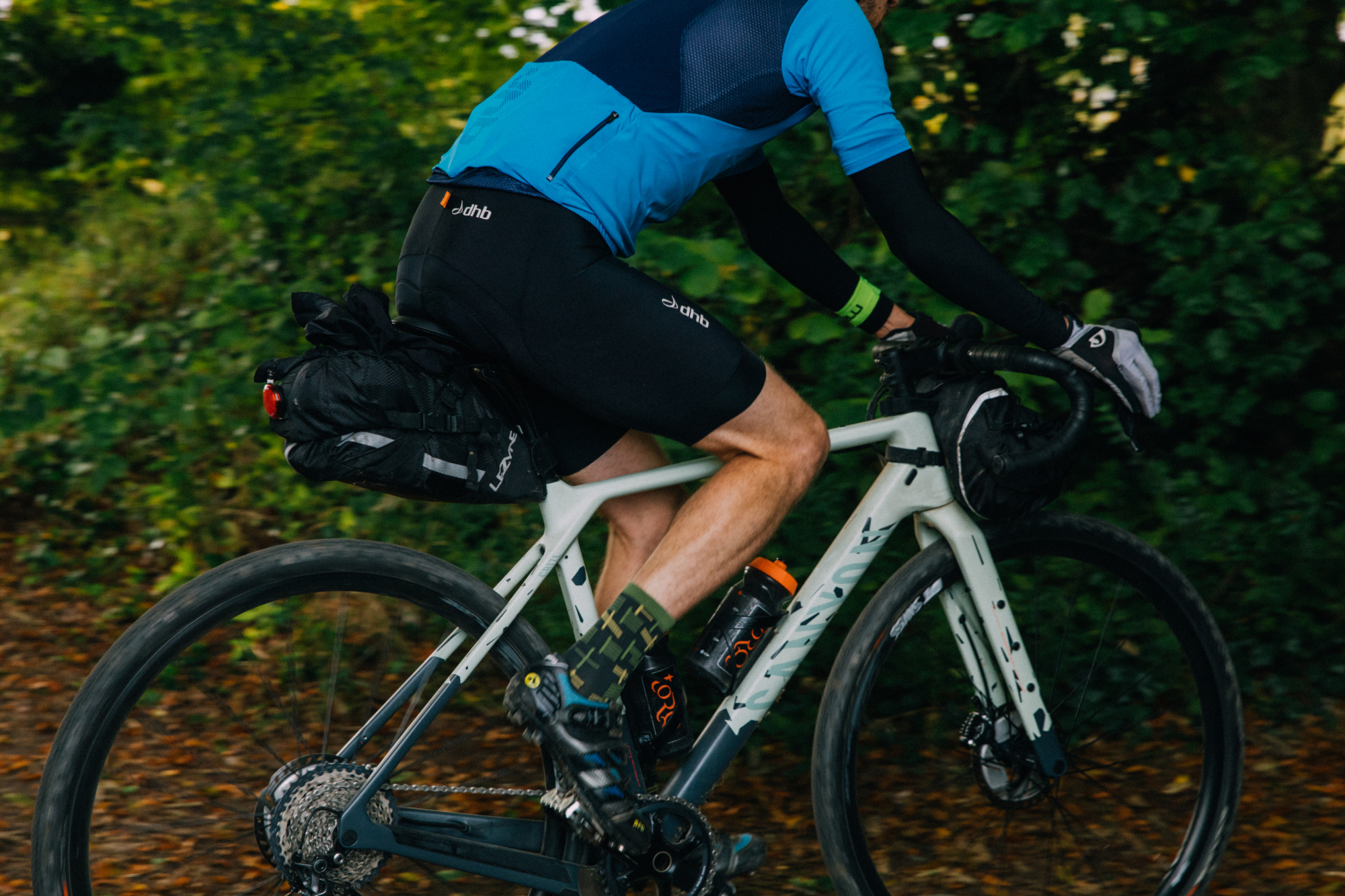
Today, perhaps more than ever, lines are blurred. The disc brake ‘revolution’ and the move towards wider, tubeless tyres on many road bikes increases their capacity to handle a range of surfaces. There are now many road bikes that are perfectly capable of taking in some ‘gravel’, especially if it's of the milder variety - grit, fire roads, byways. Likewise plenty of gravel bikes, often with just a change of tyres, are adept at racking up road miles.
To analyse the differences between gravel bikes and road bikes further, let’s look at some of the key areas of distinction…
Differences between road vs gravel bikes: Frame and forks
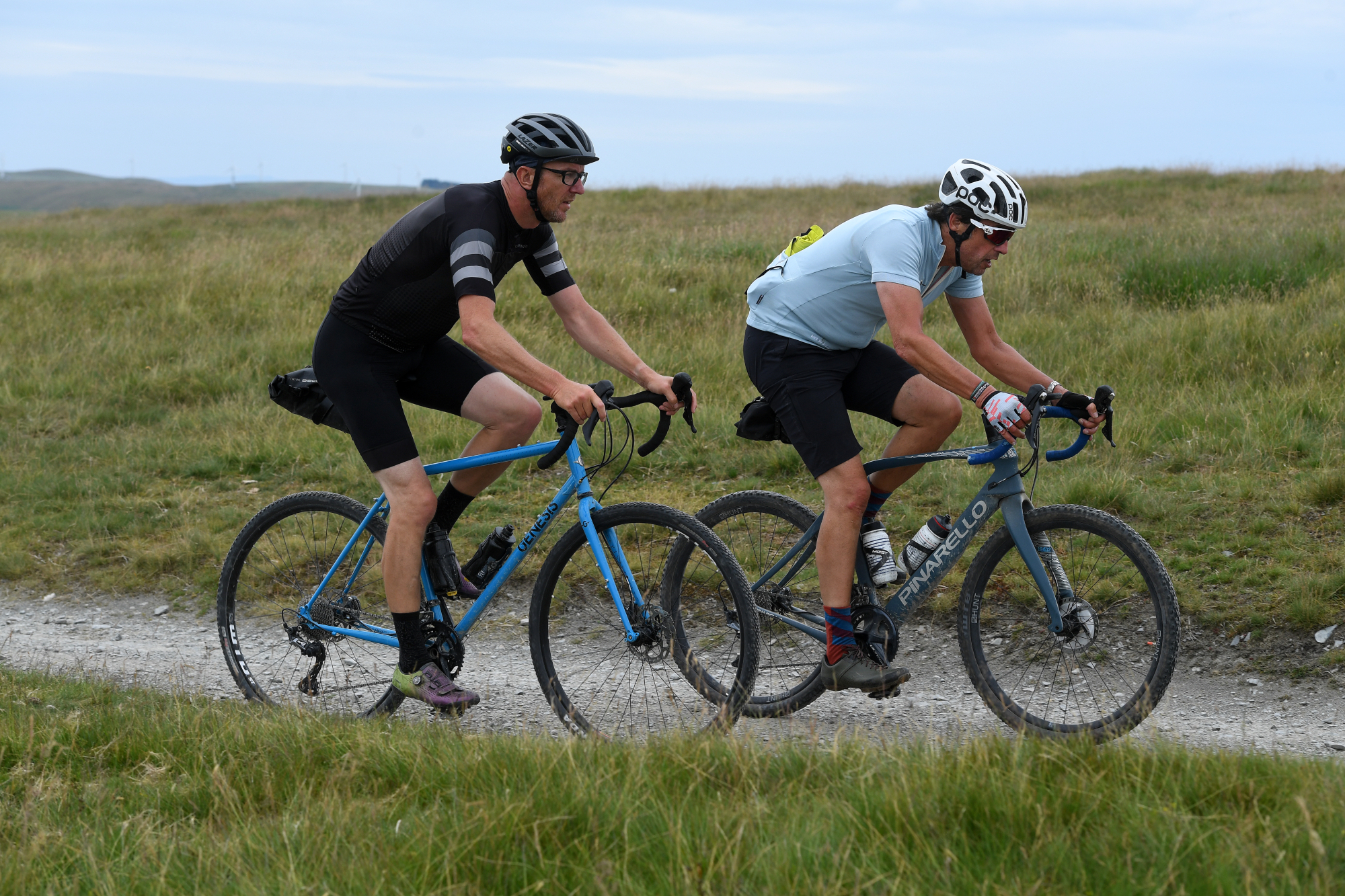
As the centre piece of any bike, the material and geometry of a frame impacts the ride - and your comfort - considerably.
Material choices for gravel and road bikes don’t differ; you can select from steel, titanium, aluminium and carbon for both and there’s plenty of frame choices for each of these. Each material does have certain attributes but how it’s used with regards to tube shapes and the bike’s overall design will probably have a greater influence on the ride than the material itself.
So how might the geometry and tube shapes of a gravel bike differ to those of a road bike? Again, as discussed in the opening, the extent of the differences here will depend on the kind of gravel and road bike.
Geometry
At the more extreme end a gravel bike well-suited to bikepacking and generally gnarly off-road conditions will place a premium on stability and comfort. The bike’s wheel base will be long, aided by chainstays that could measure as much as 450mm+. Given that a road bike designed to be fast and responsive might have stays that only measure 410mm, the differences are pronounced. While a race bike will look to draw the rear wheel closer to the seat tube, a sturdy gravel bike will do the opposite.
This is also achieved via the seat tube angle; a slacker seat tube angle places the rider over the rear wheel. Road bikes, and gravel bikes designed for speed, are likely to use a steeper angle, allowing the rear wheel to tuck in, placing the rider further forward over the pedals, and helping them to attain a lower and more aggressive riding position. A longer wheelbase, seat tube angle and chainstays help create stability over rougher terrain as well providing a solid base for fully loaded trips. Shorter and steeper in essence has the opposite effect, making an aggressive road bike more responsive but less stable.
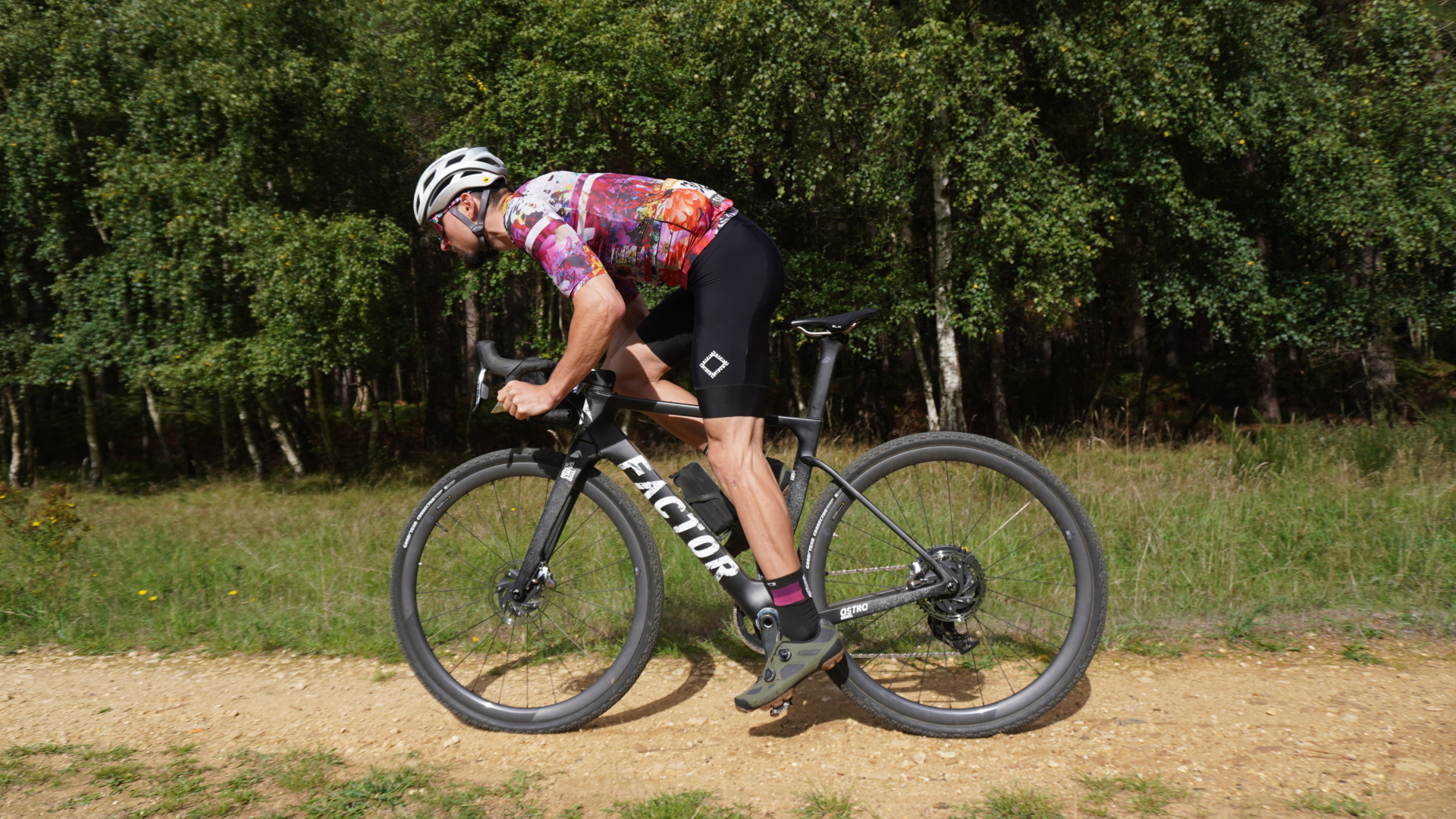
Gravel bikes designed for harsher surfaces will also have a slacker headtube angle that puts the front wheel further in front of the headtube, which makes the steering more predictable - an angle of around 70 degrees is pretty commonplace. A road bike looking to turn on a dime needs a steeper angle - 72 or 73 degrees - to achieve this agile handling. Many endurance road bikes and indeed gravel bikes that are designed to be as versatile as possible, sit somewhere in between these two numbers - and the same is true with regards to wheelbase, chain stay length and seat tube angles.
Reach and stack height are also likely to differ between gravel bikes and road bikes. These measurements dictate how the bike will fit and also the position you’ll be riding in. A road bike designed for racing will have a lower stack height and reach, enabling the rider to assume a more aerodynamically efficient position. Head into the endurance category, where comfort trumps speed, and the stack height will grow taller while the reach will shorten. This promotes a more upright posture that’s better suited to long days in the saddle.
The same is true of gravel bikes. On the whole they’ll favour a more upright riding position and will have stack and reach numbers that are similar or greater (taller and shorter) to an endurance road machine. However, the continued growth of gravel racing is seeing the birth of bikes such as the Specialized S-Works Crux, a lightweight carbon gravel bike with stack and reach numbers that will make a mountain biker wince.
Tire clearance
Perhaps the most recognisable difference between gravel bikes and road bikes is tire clearance. As a rule of thumb, a gravel bike will allow for wider tires than a road bike.
Why?
Think of it as an extension of the geometric factors discussed above. If a gravel bike needs to be able to tackle a variety of off-road terrain for it to be effective - and fun - to ride, then wider tires will increase comfort and stability considerably. High volume tires can be run at far lower pressures, which allows them to soak up the bumps while also adding grip and control. Wider frame clearance also allows for knobbly tires similar to those used on mountain bikes - these can make for some of the best gravel bike tires as they help to keep the wheels in motion when riding in wet and mucky conditions. We have a dedicated article on the best size and tread pattern for your gravel bike if you're interested on digging deeper.
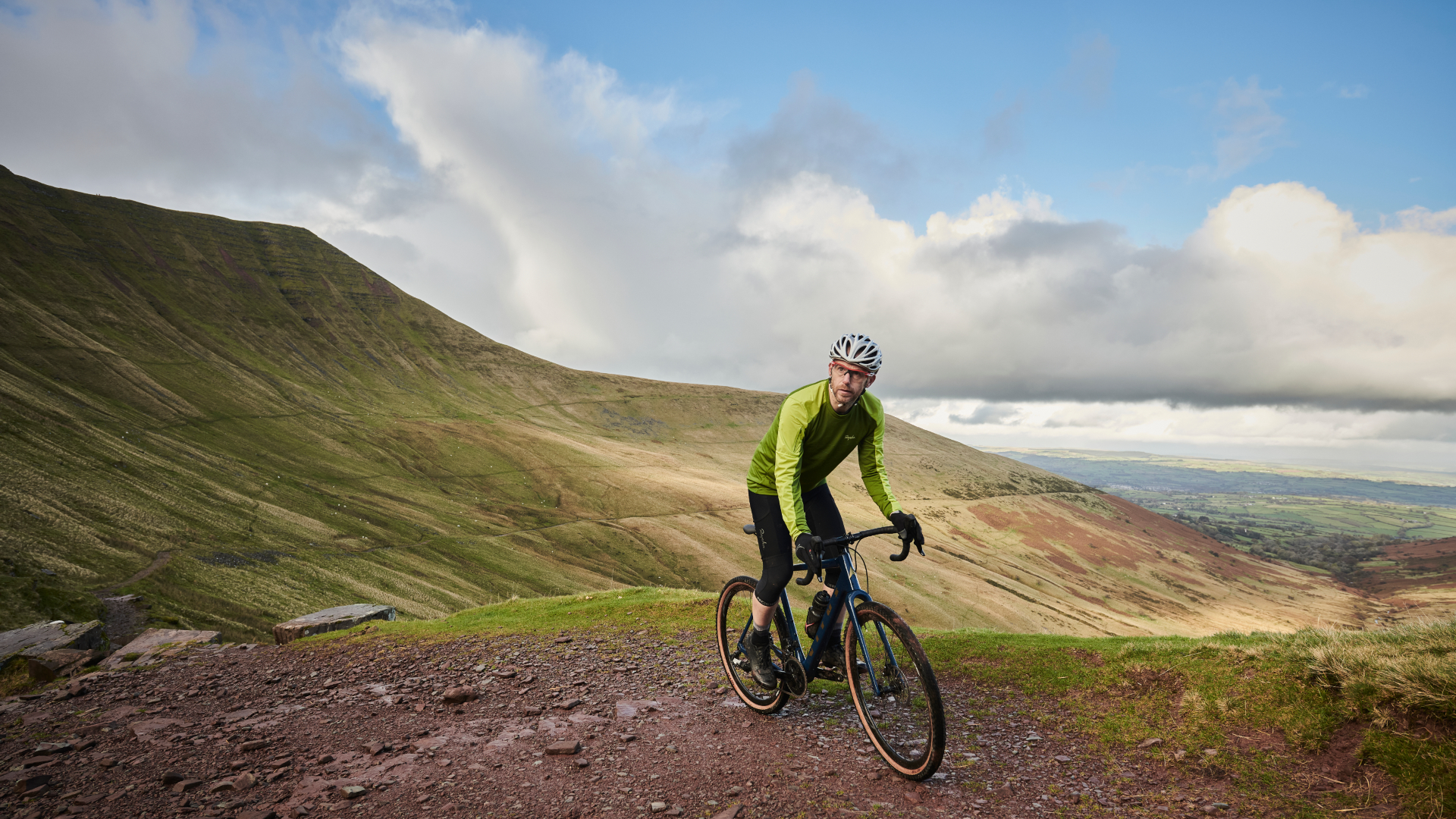
Typically a gravel bike today will enable you to run tires between 40-50mm in width, while a traditional road bike may only have clearance for up to 28mm. A road bike doesn’t need tyres with such a large contact patch, rather lowering rolling resistance is usually the key requirement here. That said, there is a trend for road bikes to follow the same ‘wider tires at lower pressures’ mantra. Comfort is a factor on the road too, especially when it comes to endurance and touring bikes. There’s also plenty of research and evidence that shows on rougher road surfaces wider, softer tires are quicker as they cope far better with power losses caused by vibrations, which send both bike and rider up rather than along.
Tube shapes
Tube shapes, whether it's a gravel bike or road bike, are influenced, in some part, by the choice of material. Steel frames, with tubes welded or brazed together, are likely to have traditional round tubing, with oval profiles also commonplace. Carbon frames are created using molds which allows for a greater variety of shapes - think aero road frames with deep headtube areas, beefed up bottom brackets and aerofoil downtubes, such as the Trek Madone.
But what are the differences between the tube shapes used on a gravel bike and those on a road bike? The aero enhanced frame described above is created to go fast on the road. The aero properties reduce drag around key areas of the frame, essentially making the bike faster or requiring the rider to produce less power to achieve the same speed. Clearly this is of vital importance to those who race, which means you will also see gravel race bikes, such as the Cervelo Aspero, adopt some of this tech.
In general though gravel bikes will favour more orthodox tube shapes, especially those made from steel. That said you’re still likely to encounter many of the standards we see on today’s modern road bikes. These include tapered head tubes, skinny dropped rear stays for improved compliance and sloping top tubes.
There are other differences, too. Gravel bikes adapt to the demands of bikepacking by increasing the number of bosses on the bike. Many frames today will include mounts for three water bottles plus additional bosses on the top tube and forks for additional bikepacking bags. Mounting points will often extend to cover mudguards (fenders) and a rear rack too - making gravel bikes adaptable for commuting and winter training miles too.
While a race bike can forgo all but the water bottle mounting points, an endurance road bike is likely to offer mounts for fitting the best fenders / mudguards for gravel bikes and increasingly those for a top tube ‘bento box’.
Differences between road vs gravel bikes: Wheels & tires
We’ve already discussed the wider tire clearance favoured by gravel bikes. This clearance naturally impacts wheel and tire choice, and there are a few differences to note between gravel and road bikes.
The greater clearance offered by gravel bike frames is to allow for high volume tires with a variety of tread patterns - a necessary requirement given that gravel encompasses such a variety of surfaces, from tiny, hard packed grit to claggy mud to larger, loose rocks as well as road sections used to link up off-road sectors. Gravel tires therefore range from semi-slicks, used for dry conditions when speed is a factor to aggressive knobblies designed for muddy trails and technical tracks.
In contrast road tires are generally slick, focussed on reducing rolling resistance, although there are options available with minimal tread patterns. Typically road tires are between 25mm and 32mm in width.
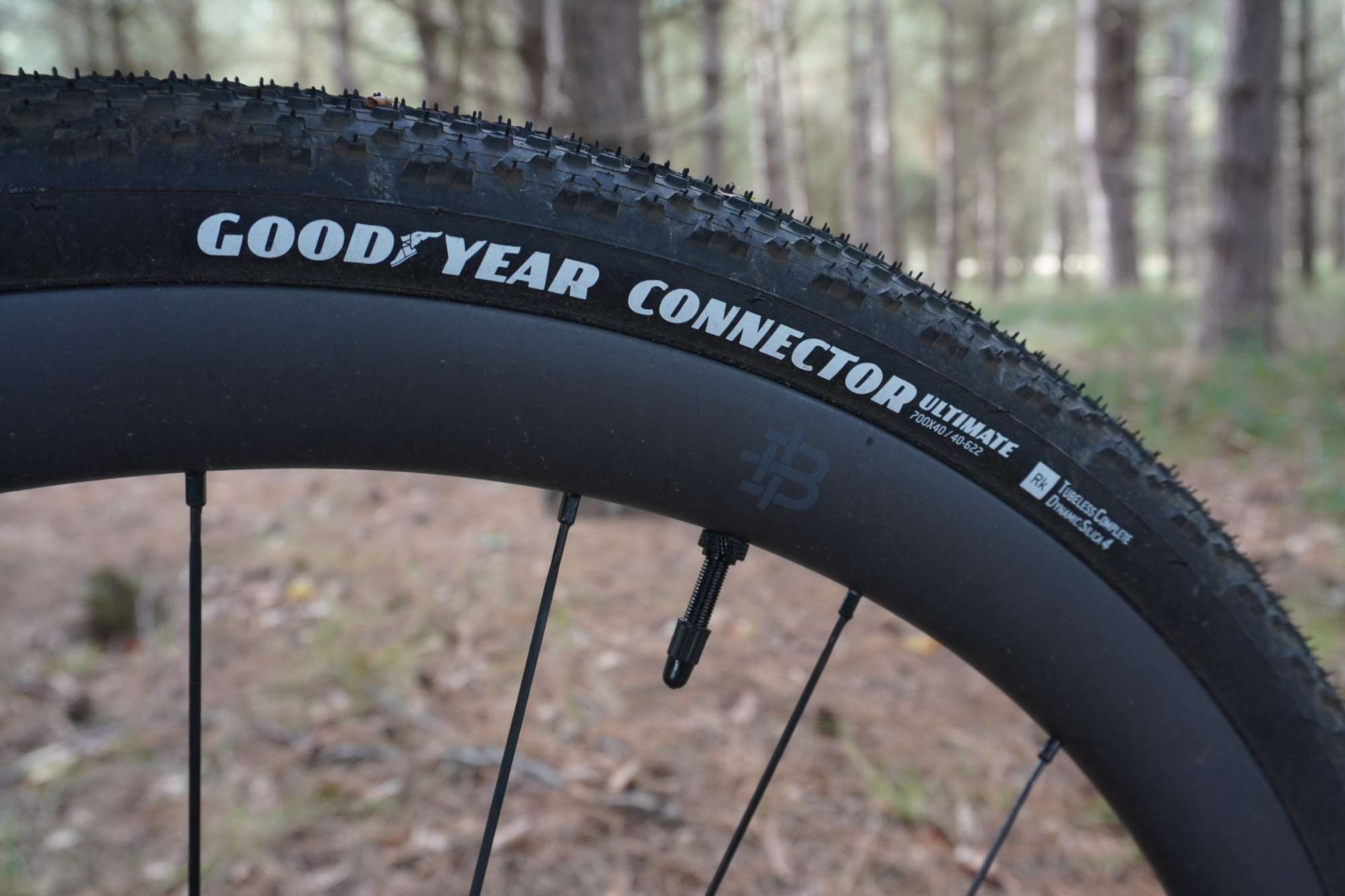
Both road and gravel wheels have developed in unison with the trend for wider tyres. Internal rim widths have increased to better suit these wider tyres and some brands, such as Zipp, use a hookless rim. A modern road wheel is likely to have an internal rim width of 19-22mm, while a wheel designed for gravel use will be a little wider, often 25 or 26mm.
The diameter of the wheel is another potential difference between gravel and road bikes. While all but the smallest modern road bikes will all use a standard 700c wheel size, some gravel bikes adopt the 650b standard. Essentially this allows the total circumference, including wheel and tyre, to match that of the larger 700c, but with the tyre accounting for a greater proportion of that measurement. This means wider tyres to increase the cushioning, making 650b a good choice for all-day comfort and harsher terrain.
Differences between road vs gravel bikes: Drivechain & Gearing
There’s plenty of crossover between gravel and road bikes when it comes to gearing choices. But often there are some differences too.
Naturally gravel bikes have adopted technologies used on mountain bikes, including the drivechain. Many modern gravel bikes use a 1x set-up, first popularized by mountain bikes, which pairs a single chain ring with a wide range cassette on the rear; ‘mullet’ builds take this a step further using a rear mountain bike derailleur to allow for the use of a matching cassette that could have as much as 50t as the largest sprocket.
While this gearing is well-suited to many gravel applications, it makes a lot of sense for bikepacking trips where eliminating a front derailleur means one less component to go wrong when you’re cycling in the middle of nowhere. It also provides a low gear that exceeds a 1:1 ratio, helping to make steep climbs while fully loaded a little more bearable.

Many gravel racers however will adopt a drivechain that closest resembles that of the road bike: a double chain ring up front paired with a 10,11 or 12-speed cassette at the back. This option provides plenty of range plus eliminates the big jumps between gears that typically occur on a 1x as you move up the block.
So are there differences between 2x gravel and road gearing? Again, this depends on the road bike. An out-and-out modern race bike is still likely to use a 53/39t chainset, or some version thereof, paired with a rear cassette that may top out at 28 or perhaps 30t.
However, endurance bikes forgo the bigger gear required for racing and use a chainset better suited to all day riding, such as a compact or sub-compact, which typically feature a big ring with 50, 48 or 46t and a small ring of 34,33 or 32t. SRAM even makes a 43/30t for use with its eTap AXS groupsets. These smaller chainsets are then usually matched with a generously wide cassette with as much as a 36t sprocket at the low end.
A 2x gravel set-up will tend to be more akin to the gearing found on an endurance bike. In fact, SRAM’s eTap AXS groupsets are designed for both road and gravel use, while Shimano has created its GRX range, dedicated gravel groupsets with appropriate gearing for the full gravel spectrum.
Differences between road vs gravel bikes: Finishing kit
Prop a modern road bike up against a wall next to equally modern gravel bike and the finishing kit - the bars, stem, saddle and seatpost - probably look fairly similar. However, there are some notable differences here, too.
Typically road bike handlebars are kept narrow to promote an ‘elbows in’ position that’s both aerodynamically more efficient and suited to riding in large groups. Widths vary but professional racers might go as narrow as a 36cm bar while a weekend rider may stretch that out to a 40, 42 or 44cm depending on their body shape and preference. As for the shape, road bars will vary in reach and drop measurements as well as the bend of the drops coming in different shapes. Regardless of this however, road bars will typically have little or no flare.
In stark contrast, gravel bars are distinguishable by their flare - the angle from the top of the handlebar to the bottom of the drops measured in degrees. Flared bars allow for greater control when riding in the drops; essentially it makes the bar wider, which increases stability as it requires you to turn the bars less when cornering or navigating a technical descent or slice of singletrack.
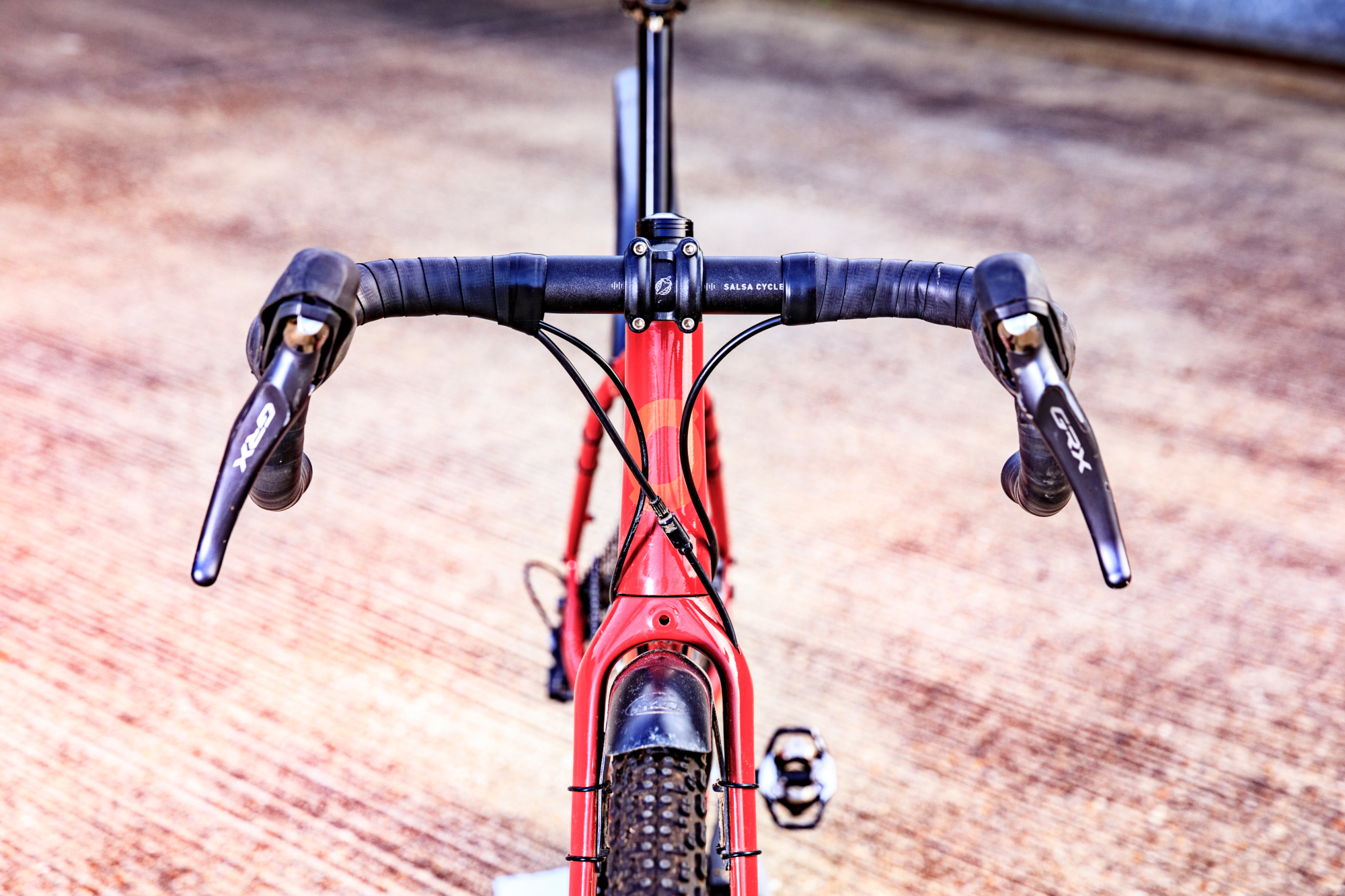
When it comes to the difference between gravel bike and road bike stems, it’s all in the length. Road bike stems will usually range from 100mm to 130mm in length, chosen appropriate to the size of the rider but also allowing for a lower, stretched out position. Gravel stems are usually under 100cm, which are a better match for the slacker head tube angle typically used.
The seatpost is likely to differ less, with carbon posts, with their dampening properties, perfectly suited to road and gravel use. Some gravel bikes have adopted the mountain bike dropper post, which can be lowered when descending via a lever on the bars allowing the rider to shift their weight back with greater ease before being returned to its normal height.
Saddles too are largely interchangeable, although gravel specific models will typically be a little wider and a wee bit shorter in length.
Pedals
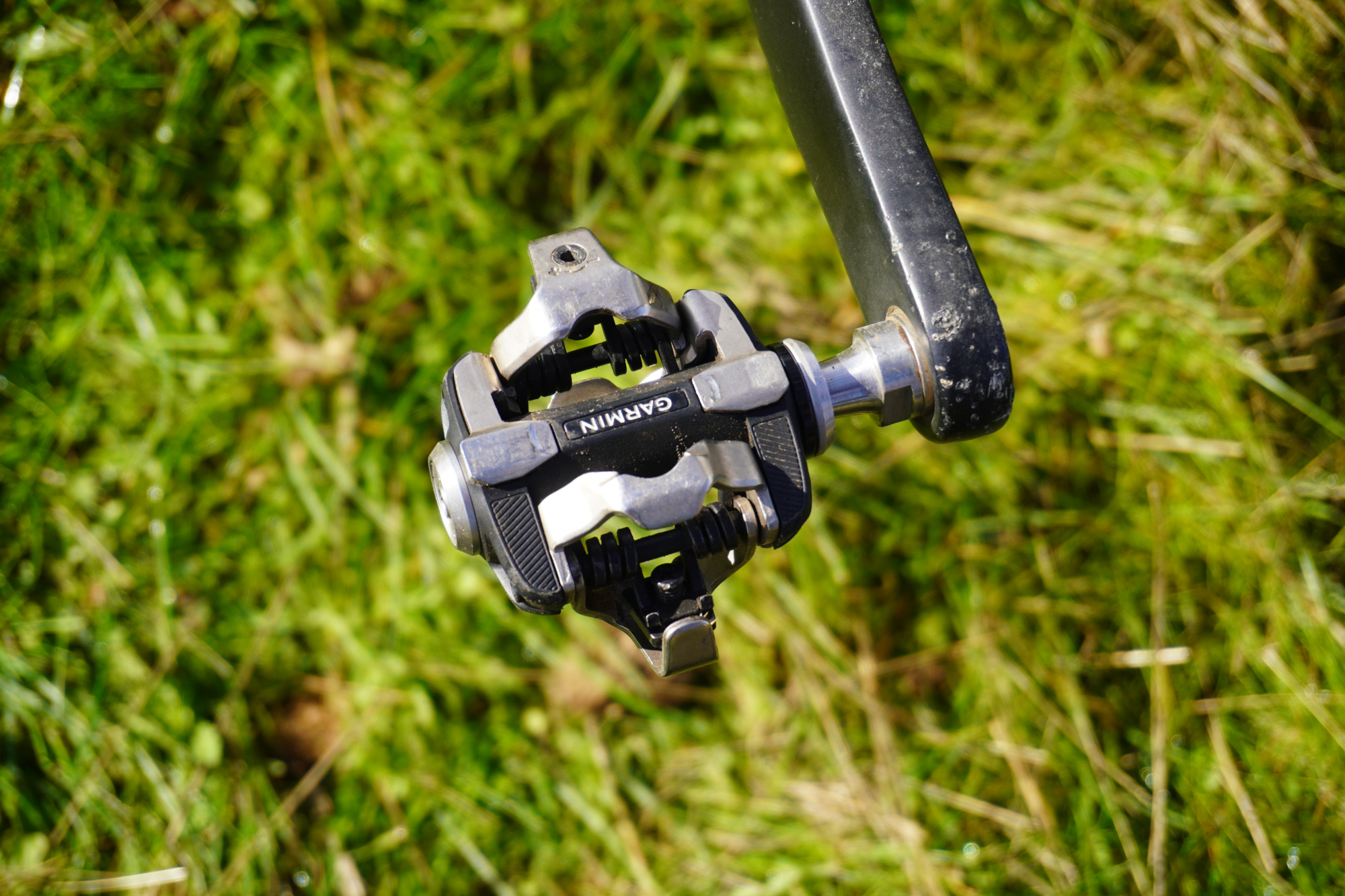
Gravel and road is largely divided into two camps when it comes to pedals, with the majority of road users favouring a three-bolt SPD-SL style pedal and cleat system, while gravel riders tend to adopt the two-bolt SPD set-up originally designed for mountain bikes.
The reasons make plenty of sense. A road SPD-SL offers a bigger platform and is a good match for the stiffer soles found on most road shoes, helping with pedaling efficiency and power transference. While the cleats are tricky to walk in, given that road shoes have no outer sole or tread, aside from navigating the café stop, most road rides will see you clipped in for the majority of the miles.
This is rarely true of gravel rides however. Head off road and you’re likely to encounter a few unrideable sections that require you to push, or indeed, carry your bike through or over the obstacles. As well as hike-a-bike requirements, bikepacking trips will see riders needing to set up camp and therefore spend some time off the bike. Two-bolt SPD offer dual-sided entry, while trail pedals do the same but with additional platform built around the mechanism. Both styles fall into the best gravel bike pedals and are used alongside the best gravel bike shoes, which feature a two-bolt cleat fitting and have a ‘walkable’ sole with tread on the front and rear of the shoes. Some gravel riders eschew clipping-in entirely, instead opting for the best flat pedals that can be worn with a variety of shoes.
So does this mean I can ride my endurance road bike on gravel and my gravel bike on the road?
The answer is yes. A modern endurance road, with clearance for wider tires, is perfectly capable of taking in some gravel roads, especially of the ‘finer’ variety that’s found in many states in the US but less so in Europe. By changing the tyres from road slicks to something with a little tread the bike will cope admirably; after all it’s likely to share many similarities to a dedicated gravel bike as we’ve discussed in the previous sections.
If you’re planning on tackling off-road routes in the UK, for example, you may find it more of a challenge on an endurance road bike. Even the wider clearances of these bikes will be no match for the claggy conditions that pervade much of the British countryside, especially after a bout of rain. That said, you only need to look up a few photographs of the Rough Stuff Fellowship, an off-road cycling club that started in 1956 and saw its early members tackle adventurous rides all over the UK on touring bikes, to see what’s possible. So too Joobst Brandt’s rides during the 1970s in Marin County, which often included a young Tom Ritchey, and saw ‘road’ bikes pushed to their limits; it’s no stretch to say the versatility and practicality inherent in Ritchey bikes was first seeded during these mammoth rides.
A gravel bike, by nature, is also a versatile machine. Given that many gravel rides will also take in some sections of road, they are, for the most part, designed to roll along on the smooth stuff without being restrictive. They often feature bosses for mudguards and racks too, so can comfortably pull double duty as a commuter or winter bike.
Luke Friend has worked as a writer, editor and copywriter for over twenty five years. Across books, magazines and websites, he's covered a broad range of topics for a range of clients including Major League Baseball, Golf Digest, the National Trust and the NHS. He has an MA in Professional Writing from Falmouth University and is a qualified bicycle mechanic. He has been a cycling enthusiast from an early age, partly due to watching the Tour de France on TV. He's a keen follower of bike racing to this day as well as a regular road and gravel rider.